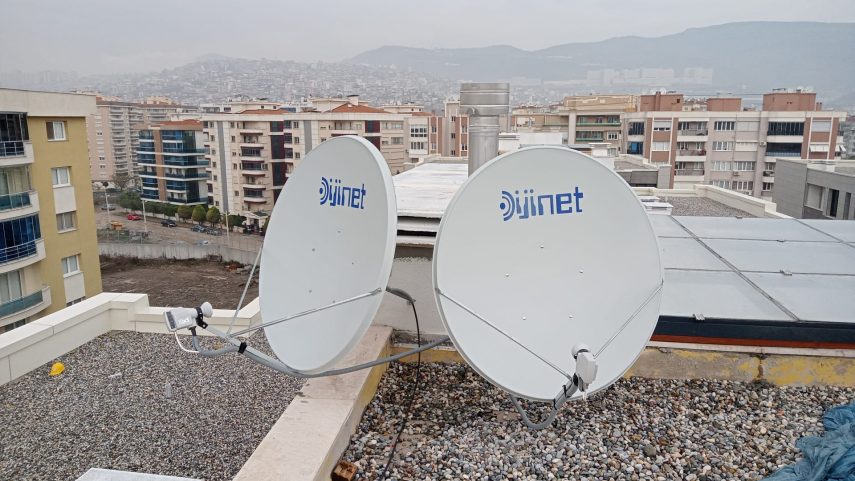Television technology has moved rapidly towards digitalisation in recent years. Traditional analogue broadcasts have been replaced by digital broadcasts, offering higher picture quality, a wider choice of channels and interactive features. Digital QAM TV forms an important part of this digital transformation. Therefore, these devices appear as ambitious products to demonstrate a high level of performance.
Digital QAM TV is an abbreviation for Quadrature Amplitude Modulation. It is a transmission technology used to transmit and modulate television signals digitally. This technology broadcasts television programmes by converting them into digital data packets. Digital QAM TV is a widely used method in cable television and other cable-based transmission systems. This method has a critical impact on achieving a high level of image quality!
Why is QAM Necessary?
Digital QAM TV basically works by converting analogue signals into digital data packets. Television programmes are divided into data packets in digital formats. This data is transmitted using the QAM modulation technique. QAM uses one carrier wave and two phase-shifted waves to carry the data. This makes it possible to carry more data and increase the data rate. QAM is preferred because it provides various advantages. The advantages it provides can be listed as follows;
- High Image Quality
- More Channel Options
- Flexibility and Harmonious Design
- Less Space Saving Feature
- Data Rate and Interactivity Feature
Digital QAM TV delivers high definition (HD) picture quality. Digital signals provide clearer and sharper images with less distortion and interference. This device provides the ability to carry more channels on the same frequency. This allows for a wider choice of channels. It also offers high data rates and interactive features. This supports faster load times and interactive TV applications.
Since digital broadcasts require less bandwidth, more content is transmitted with less bandwidth. This allows more content to be presented in the same space. Digital QAM TV can adapt to different data rates and resolutions. This makes it easy to be compatible with different consumer devices and displays. Therefore, this system, supported by advanced technologies, has been popular recently!
How Many Channels Can Be Sent Over One Band in QAM System?
QAM system is a modulation technique used to transmit multiple streams of digital data over a single frequency band. This technique carries the data using both amplitude and phase changes and can thus increase the data rate. How many channels can be transmitted over a band in this innovative system depends on the type of QAM modulation used, bandwidth and other factors. When you pay attention to these factors, you will get a high level of benefit from such technological systems.
In general, higher QAM modulations can carry more data. However, they also require more sensitivity and have a higher probability of error. These modulations are usually expressed in terms of a specific QAM grade (such as QAM-16 or QAM-64). Each QAM grade indicates the number of bits carried in a symbol. It is important to remember that systems supported by such advanced technologies must have a solid infrastructure. Only in this way can you get the desired benefit from the system.
Higher QAM grades, such as QAM-256, can carry more data, but may have a higher probability of error within the same bandwidth. In practice, factors such as bandwidth, error tolerance and data rate are taken into account to determine how many channels should be transmitted simultaneously. Here you need to pay attention to the usage characteristics of the systems in question.
How Should I Choose a QAM Devices?
QAM devices are commonly used in cable TV distribution, broadband internet, digital broadcasting and communication systems. Choosing the right QAM device is very important to get a solution that suits your needs and system requirements. Here are some factors to consider when selecting QAM devices:
Intended use
Determining for which purpose you will use a QAM device is the first criteria to be considered. QAM devices can be used in different ways in different areas such as television broadcasting, internet services, industrial communication. You should clarify your usage scenario to choose a device that suits your needs.
Data rate and capacity
QAM devices vary according to the data rate capacity they can carry. You should choose the capacity of your device by determining at what speed you will transmit data and how many channels you need to support.
Degree of modulation
The QAM modulation determines the way data is carried. Different degrees of modulation (e.g. QAM-16, QAM-64, QAM-256) can carry data at different speeds. You should select the degree of modulation that suits your needs.
Cohesion and integration
It is important that the QAM device you choose is compatible with your existing system and infrastructure. Integration capabilities and protocol support should be considered to ensure the smooth operation of your system.
Remote management and monitoring
Remote management and monitoring features allow you to monitor the performance of the QAM device and intervene remotely when necessary. These features can streamline maintenance and troubleshooting processes.
Reliability and durability
Reliability is especially important in industrial or continuously used systems. You can minimise system outages by choosing a quality and durable QAM device.
Support and technical services
After your device selection, you should check whether technical support and services are offered. This is important to deal with possible problems.
Cost and budget
Finally, you should determine your budget and choose a device that suits your needs. When choosing a quality and affordable device, you should also evaluate the long-term costs and return on investment.
